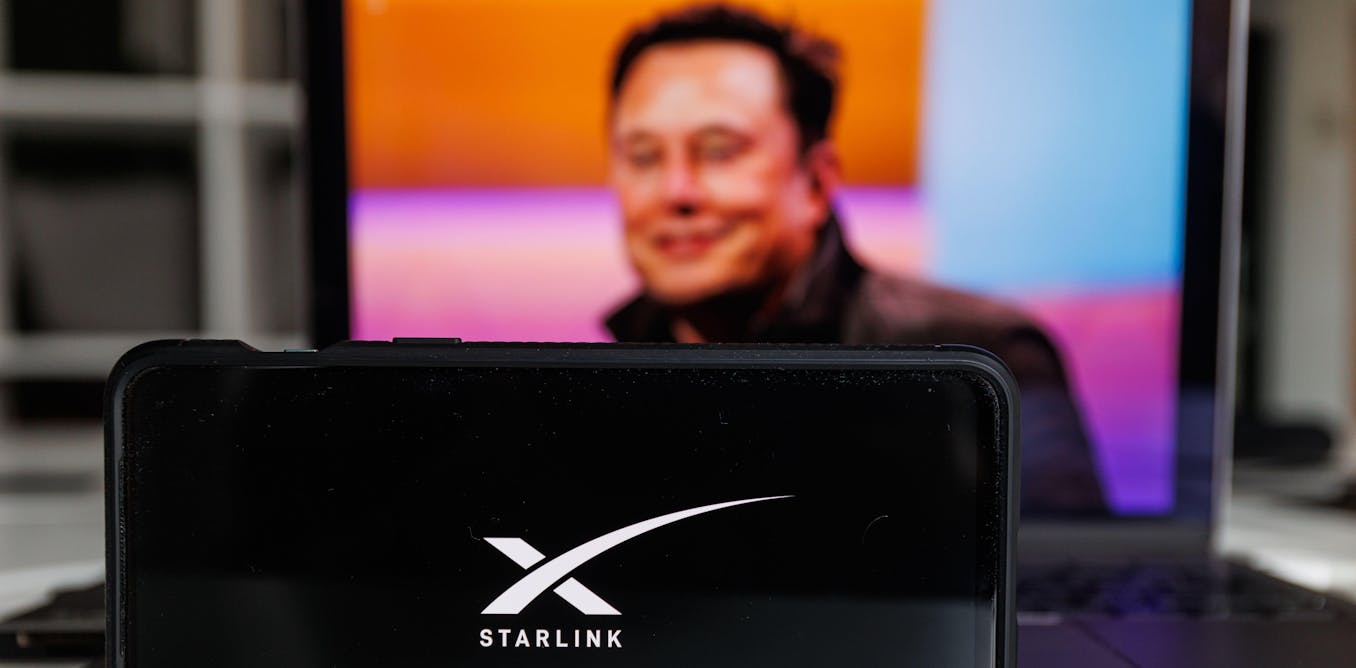By Joscha Abels, Post-Doctoral Researcher, Institute of Political Science, University of Tübingen
This has effectively limited the inflow of media reports to the Iranian public. It has also made it more difficult for Iranians to organise amid violent crackdowns by the regime’s security forces. The activation of Starlink could allow them to bypass government censorship and restore contact with the outside world – and each other.
It is not the first time Iran’s government has restricted internet access to stifle unrest – nor is it the first time that Musk got involved. In 2022, amid nationwide protests following the death of a 22-year-old Kurdish Iranian woman, Mahsa Amini, at the hands of the security forces, ostensibly for wearing her hijab incorrectly, Musk activated Starlink over Iran for the first time.
This triggered the smuggling of thousands of Starlink terminals into the country from neighbouring states. These terminals are flat rectangular devices, no larger than a baking tray. It is estimated that around 20,000 of them have found their way into Iran, giving Musk’s latest move a more immediate impact.
Still, reestablishing internet coverage remains difficult. The few available Starlink terminals are traded on the black market at exorbitant prices, and Starlink services in Iran still require payments of a monthly subscription fee. Iran’s government has also issued threats against citizens who use the system.
A new kind of warfare
Starlink is the most advanced communication satellite system in the world. Orbiting Earth at an altitude of about 550kms, its satellites deliver high-speed internet to customers around the globe. Out of more than 12,000 active satellites in orbit, around 7,600 belong to Starlink.
The system is operated by SpaceX, a space tech firm headquartered in Texas. SpaceX has recently become the world’s most valuable privately held company according to Bloomberg, surpassing even ByteDance (TikTok) and OpenAI.
Musk continues to act as the company’s largest stakeholder and chief executive, even while wielding huge political influence (following his recent rift with the US president, there is evidence he still wields considerable political clout in the US).
Starlink owes much of its geopolitical relevance to modern warfare. Secure communications have become essential on today’s data-driven battlefields. The mass availability of drones has fundamentally changed how wars are fought. High-bandwidth connections are needed for drones to transmit live video and receive targeting data.
As land-based connections are vulnerable to sabotage and outright attacks, mega-constellations such as Starlink provide a robust alternative. Comprising thousands of units, several hundreds of kilometres above ground, their services are difficult to disrupt.
Ukraine: a cautionary tale
Nowhere has the importance of satellite communications for geopolitics been more evident than in Ukraine. Russia prepared its invasion by conducting cyberattacks on Ukraine’s Viasat system. Musk responded by activating Starlink, announcing the move in the same casual style that he used for Iran.
The effect was immediate. Starlink quickly became indispensable for Ukraine’s counter-offensive efforts. Amid the Russian onslaught, it provided the nation’s military with secure communications to push back against the invasion. For SpaceX, this yielded not just hugely positive publicity but also substantial financial injections from investors.
Just months into Starlink’s activation, SpaceX initiated a strategic shift. Ukrainian forces reported outages along the front lines, especially when pushing into Russian-occupied territory. In October 2022, Musk floated the idea that SpaceX might withdraw support altogether, citing high operational costs.
By February 2023, the company had begun limiting Starlink’s use for the operation of Ukrainian drones. SpaceX’s chief operating office, Gwynne Shotwell stated that the system was “never intended to be weaponized”.
Power in private hands
Starlink’s role in Ukraine offers a striking example of how modern communications can change the course of conflicts, as I argued in a recent article in the European Journal of International Relations. At the same time, it serves as a cautionary tale about the reliability of critical systems in the hands of private corporations and powerful individuals.
In Ukraine, Musk held the power to effectively veto military operations. No democratic body provided oversight – the signal could be switched off with a tweet. Starlink’s role in Iran raises similarly uncomfortable questions: who decides when – or whether – citizens get to communicate?
While the region is struggling to establish a fragile ceasefire, political unrest in Iran is unlikely to subside soon. The deeper truth remains that communications within Iran’s civil society currently depend on the world’s wealthiest person – and no alternatives are in sight.
This article written by Joscha Abels, Post-Doctoral Researcher, Institute of Political Science, University of Tübingen and is republished from The Conversation under a Creative Commons license. Read the original article.




